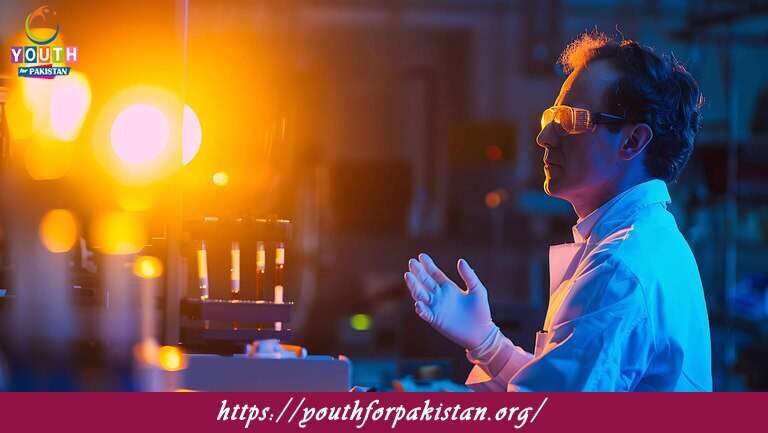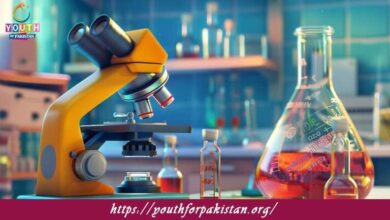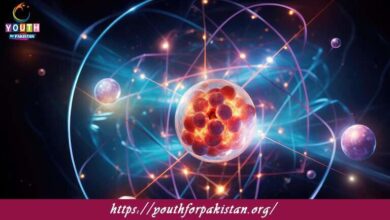11th Class Chemistry Chapter 7 MCQs with Answers

Revise energy-related concepts with Thermochemistry MCQs focused on enthalpy, heat transfer, and thermodynamic laws. Chapter 7 quizzes make 11th Class Chemistry easier to learn.
Thermochemistry is the study of:
a) Heat transfer between objects
b) Chemical reactions involving gases
c) Energy changes in chemical reactions
d) Thermodynamics of inorganic compounds
Which of the following is an example of an exothermic reaction?
a) Melting ice
b) Photosynthesis
c) Evaporating water
d) Burning wood
The SI unit for heat energy is:
a) Joule
b) Calorie
c) Kelvin
d) Watt
The heat absorbed or released during a chemical reaction at constant pressure is called:
a) Enthalpy change
b) Entropy change
c) Internal energy change
d) Gibbs free energy change
The enthalpy change for an endothermic reaction is:
a) Positive
b) Negative
c) Zero
d) Indeterminate
Hess’s law is based on the principle of:
a) Conservation of mass
b) Conservation of energy
c) Constant pressure
d) Constant volume
Which of the following statements is true about exothermic reactions?
a) Heat is absorbed from the surroundings
b) The enthalpy change is positive
c) The products have higher energy than the reactants
d) Heat is released to the surroundings
The enthalpy change in a chemical reaction depends on the:
a) Initial temperature of the reactants
b) Total mass of the reactants
c) Number of moles of reactants
d) Difference in enthalpy between products and reactants
The specific heat capacity of a substance is defined as the amount of heat required to raise the temperature of:
a) One mole of the substance by 1°C
b) One gram of the substance by 1°C
c) One liter of the substance by 1°C
d) One kilogram of the substance by 1°C
The enthalpy change of a reaction is represented by the symbol:
a) ΔS
b) ΔG
c) ΔH
d) ΔU
The enthalpy change for an exothermic reaction is:
a) Positive
b) Negative
c) Zero
d) Indeterminate
The process of combining two or more smaller nuclei to form a larger nucleus is called:
a) Fission
b) Fusion
c) Vaporization
d) Condensation
The heat required to convert 1 gram of a solid into a liquid at its melting point is called:
a) Heat of fusion
b) Heat of vaporization
c) Heat of sublimation
d) Heat of condensation
The heat of vaporization is the heat required to:
a) Convert a liquid to a solid
b) Convert a solid to a gas
c) Convert a liquid to a gas
d) Convert a gas to a solid
The enthalpy change for an exothermic reaction is represented as:
a) Positive
b) Negative
c) Zero
d) Indeterminate
The specific heat capacity of a substance is defined as the amount of heat required to raise the temperature of:
a) One mole of the substance by 1°C
b) One gram of the substance by 1°C
c) One liter of the substance by 1°C
d) One kilogram of the substance by 1°C
The enthalpy change of a reaction is represented by the symbol:
a) ΔS
b) ΔG
c) ΔH
d) ΔU
The enthalpy change for an exothermic reaction is:
a) Positive
b) Negative
c) Zero
d) Indeterminate
The process of combining two or more smaller nuclei to form a larger nucleus is called:
a) Fission
b) Fusion
c) Vaporization
d) Condensation
The heat required to convert 1 gram of a solid into a liquid at its melting point is called:
a) Heat of fusion
b) Heat of vaporization
c) Heat of sublimation
d) Heat of condensation
The heat of vaporization is the heat required to:
a) Convert a liquid to a solid
b) Convert a solid to a gas
c) Convert a liquid to a gas
d) Convert a gas to a solid
The enthalpy change for an exothermic reaction is represented as:
a) Positive
b) Negative
c) Zero
d) Indeterminate
The specific heat capacity of a substance is defined as the amount of heat required to raise the temperature of:
a) One mole of the substance by 1°C
b) One gram of the substance by 1°C
c) One liter of the substance by 1°C
d) One kilogram of the substance by 1°C
The enthalpy change of a reaction is represented by the symbol:
a) ΔS
b) ΔG
c) ΔH
d) ΔU
The enthalpy change for an exothermic reaction is:
a) Positive
b) Negative
c) Zero
d) Indeterminate
The process of combining two or more smaller nuclei to form a larger nucleus is called:
a) Fission
b) Fusion
c) Vaporization
d) Condensation
The heat required to convert 1 gram of a solid into a liquid at its melting point is called:
a) Heat of fusion
b) Heat of vaporization
c) Heat of sublimation
d) Heat of condensation
The heat of vaporization is the heat required to:
a) Convert a liquid to a solid
b) Convert a solid to a gas
c) Convert a liquid to a gas
d) Convert a gas to a solid
The enthalpy change for an exothermic reaction is represented as:
a) Positive
b) Negative
c) Zero
d) Indeterminate
The specific heat capacity of a substance is defined as the amount of heat required to raise the temperature of:
a) One mole of the substance by 1°C
b) One gram of the substance by 1°C
c) One liter of the substance by 1°C
d) One kilogram of the substance by 1°C
The enthalpy change of a reaction is represented by the symbol:
a) ΔS
b) ΔG
c) ΔH
d) ΔU
The enthalpy change for an exothermic reaction is:
a) Positive
b) Negative
c) Zero
d) Indeterminate
The process of combining two or more smaller nuclei to form a larger nucleus is called:
a) Fission
b) Fusion
c) Vaporization
d) Condensation
The heat required to convert 1 gram of a solid into a liquid at its melting point is called:
a) Heat of fusion
b) Heat of vaporization
c) Heat of sublimation
d) Heat of condensation
The heat of vaporization is the heat required to:
a) Convert a liquid to a solid
b) Convert a solid to a gas
c) Convert a liquid to a gas
d) Convert a gas to a solid
The enthalpy change for an exothermic reaction is represented as:
a) Positive
b) Negative
c) Zero
d) Indeterminate
The specific heat capacity of a substance is defined as the amount of heat required to raise the temperature of:
a) One mole of the substance by 1°C
b) One gram of the substance by 1°C
c) One liter of the substance by 1°C
d) One kilogram of the substance by 1°C
The enthalpy change of a reaction is represented by the symbol:
a) ΔS
b) ΔG
c) ΔH
d) ΔU
The enthalpy change for an exothermic reaction is:
a) Positive
b) Negative
c) Zero
d) Indeterminate
The process of combining two or more smaller nuclei to form a larger nucleus is called:
a) Fission
b) Fusion
c) Vaporization
d) Condensation
The heat required to convert 1 gram of a solid into a liquid at its melting point is called:
a) Heat of fusion
b) Heat of vaporization
c) Heat of sublimation
d) Heat of condensation
The heat of vaporization is the heat required to:
a) Convert a liquid to a solid
b) Convert a solid to a gas
c) Convert a liquid to a gas
d) Convert a gas to a solid
The enthalpy change for an exothermic reaction is represented as:
a) Positive
b) Negative
c) Zero
d) Indeterminate
The specific heat capacity of a substance is defined as the amount of heat required to raise the temperature of:
a) One mole of the substance by 1°C
b) One gram of the substance by 1°C
c) One liter of the substance by 1°C
d) One kilogram of the substance by 1°C
The enthalpy change of a reaction is represented by the symbol:
a) ΔS
b) ΔG
c) ΔH
d) ΔU
The enthalpy change for an exothermic reaction is:
a) Positive
b) Negative
c) Zero
d) Indeterminate
The process of combining two or more smaller nuclei to form a larger nucleus is called:
a) Fission
b) Fusion
c) Vaporization
d) Condensation
The heat required to convert 1 gram of a solid into a liquid at its melting point is called:
a) Heat of fusion
b) Heat of vaporization
c) Heat of sublimation
d) Heat of condensation
The heat of vaporization is the heat required to:
a) Convert a liquid to a solid
b) Convert a solid to a gas
c) Convert a liquid to a gas
d) Convert a gas to a solid
The enthalpy change for an exothermic reaction is represented as:
a) Positive
b) Negative
c) Zero
d) Indeterminate
The specific heat capacity of a substance is defined as the amount of heat required to raise the temperature of:
a) One mole of the substance by 1°C
b) One gram of the substance by 1°C
c) One liter of the substance by 1°C
d) One kilogram of the substance by 1°C
The enthalpy change of a reaction is represented by the symbol:
a) ΔS
b) ΔG
c) ΔH
d) ΔU
The enthalpy change for an exothermic reaction is:
a) Positive
b) Negative
c) Zero
d) Indeterminate
The process of combining two or more smaller nuclei to form a larger nucleus is called:
a) Fission
b) Fusion
c) Vaporization
d) Condensation
The heat required to convert 1 gram of a solid into a liquid at its melting point is called:
a) Heat of fusion
b) Heat of vaporization
c) Heat of sublimation
d) Heat of condensation
The heat of vaporization is the heat required to:
a) Convert a liquid to a solid
b) Convert a solid to a gas
c) Convert a liquid to a gas
d) Convert a gas to a solid
The enthalpy change for an exothermic reaction is represented as:
a) Positive
b) Negative
c) Zero
d) Indeterminate
The specific heat capacity of a substance is defined as the amount of heat required to raise the temperature of:
a) One mole of the substance by 1°C
b) One gram of the substance by 1°C
c) One liter of the substance by 1°C
d) One kilogram of the substance by 1°C
The enthalpy change of a reaction is represented by the symbol:
a) ΔS
b) ΔG
c) ΔH
d) ΔU
The enthalpy change for an exothermic reaction is:
a) Positive
b) Negative
c) Zero
d) Indeterminate
If you are interested to enhance your knowledge regarding Physics, Chemistry, Biology, and Computer please click on the link of each category, you will be redirected to dedicated website for each category.





